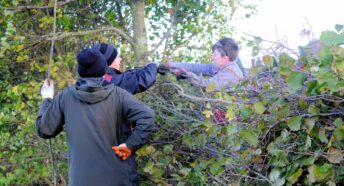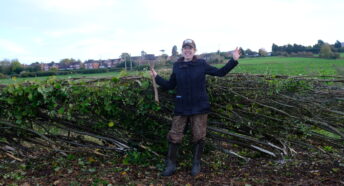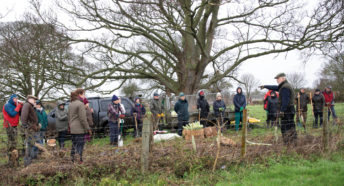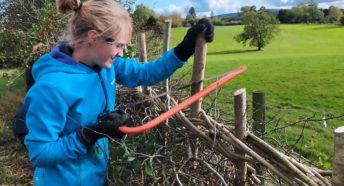Crafting the countryside: a hedgelayer’s life
Hedgelaying is a traditional countryside craft which strengthens hedges and boosts their benefits to wildlife and planet. We chatted to hedgelayer Clive Leeke, who believes hedgerows – and the ancient art of hedgecraft – are making a comeback.
What drew you to this line of work?
I always had a bit of a yearning for hedgerows. As a child on the bus into Reading, I’d sometimes see a chap laying hedges by the road. That just clicked in my brain and stayed with me. Later, I went to agricultural college and worked on a few local farms, then moved into landscaping.
At the time, Dutch elm disease was sweeping through the area. Soon, every elm tree in the Thames Valley was gone. Those elms were often the main feature of hedgerows, so when they went, landowners and farmers saw it as an opportunity to bulldoze out the rest of the hedge and create bigger fields. There was a big decline in hedgerows, and I thought: ‘I don’t know if this is right.’
How did you learn hedgecraft?
I always wondered where I could learn about hedgelaying, but at the time it was a very neglected art. I picked up a bit from an old local boy who did it as a hobby, and in 1989 I teamed up with four other enthusiasts to enter a novice hedgelaying competition. And that was it for me, really – I worked my way up from there.
What are the main aspects of your job?
Hedgelaying involves rejuvenating an ageing hedge by partly cutting through the trunks of the trees or shrubs making up the hedge, and arching the branches together (pleaching). This encourages new growth and strengthens the structure. We tend to get two kinds of jobs: one is planting new hedges, with a view to laying them in future, and the other is the restoration and laying of derelict hedges.
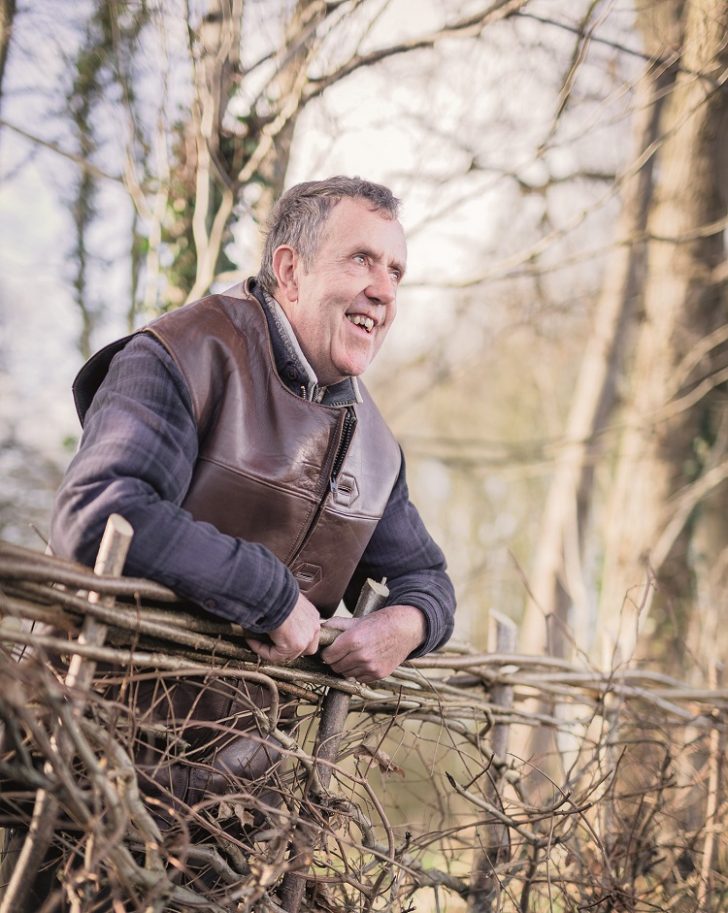
Is it a very seasonal line of work?
Very much so. The hedgelaying season is officially September to the end of March, but we tend not to start until the leaf is coming off. And that’s happening later and later: it used to be the last week of October, now it’s the second week in November. Hedgelayers are very aware of climate change – we can see it happening.
Is it hard working in all weathers?
It can be tough, but I’ve never had an indoor job. Many people have lost touch with nature and the seasons, but as a hedgelayer, you feel at one with the outside world. Once you get to February, there’s something new every day: the snowdrops come out; the first sprigs of cherry plum blossom appear; you see your first daffodil. We stop when the birds start nesting, so you’re very aware of working against the clock. If you want winter to pass quickly, take up hedgelaying!
Is it a lonely job?
It can be, but not for me – I soon realised it would be more efficient to work as a team. Ever since I first felt proficient enough to teach somebody, I’ve usually had a trainee with me, and we’re currently a team of three. Over the years, I’ve trained up six professional hedgelayers, including my own son, Sam, which is very satisfying.
What do you enjoy most about the work?
Recognition from the public. A lot of people slow down if they see us working by the roadside, and give us a thumbs up or stop to chat. Many will tell us they’ve seen hedgelaying on Countryfile, or say ‘Prince Charles does that!’ And I get a real buzz from teaching hedgecraft courses. I think there’s a lot more awareness of the value of hedges than there used to be.
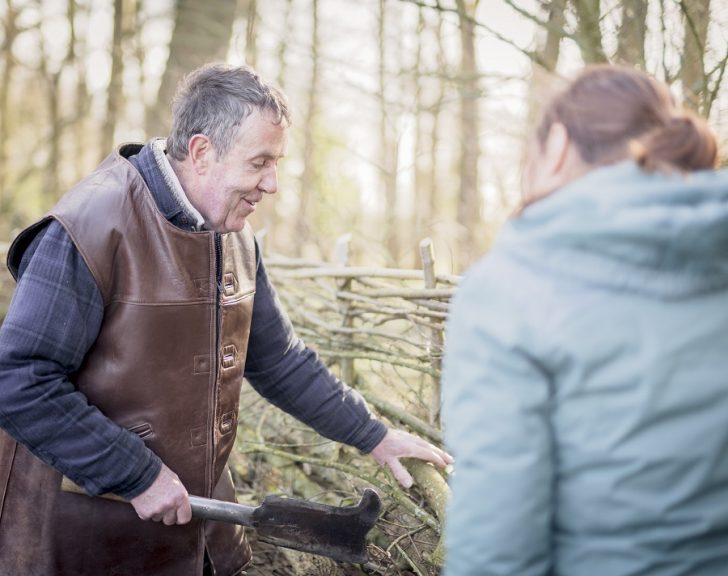
And what’s their value?
The habitat improvement you see with hedgelaying is tremendous. Soon after, hedges will be inhabited by farmland birds – including species that have almost disappeared, like the siskins, wheatears and most of the finches. Last year I heard a wheatear singing in a lane near here, for the first time in years.
Then there are the big issues of flooding and climate change. People are becoming more aware of how important hedges are for combating soil erosion and holding back water, as well as their role as carbon sinks. I think the tide has turned for hedgerow decline, and hopefully farmers will be rewarded in future for planting more trees and hedges. It’s exciting.
What makes a healthy hedge?
It should be at least two metres wide at the base, so that it’s a motorway for small mammals, and it should have a dense understory, for nesting birds. It should be trimmed every two years, or less. If you cut it right back every year, you don’t allow it to blossom and provide nectar for pollinators, or to thicken at the base.
For me, it should ideally also have hedgerow trees every 30 metres or so, to add height and create perches for raptors. A hedgerow without a tree is quite a dull thing.
Do you take an interest in hedges further afield?
Yes, I get told off by my wife for looking at hedgerows wherever we go! I always prefer it if she drives, really, so I can look out of the window. It’s not just hedges I’m interested in, but also other field boundaries, like drystone walls. To me, having a patchwork quilt of fields is an intrinsic part of the English landscape – it’s made our countryside what it is.
Discover more with our friends at the National Hedgelaying Society, Hedgelink and the South of England Hedgelaying Society
A version of this article was originally published in CPRE’s award-winning magazine, Countryside Voices. You’ll have Countryside Voices sent to your door three times a year, as well as access to other benefits including discounts on attraction visits and countryside kit from major high street stores when you join as a CPRE member. Join us now.
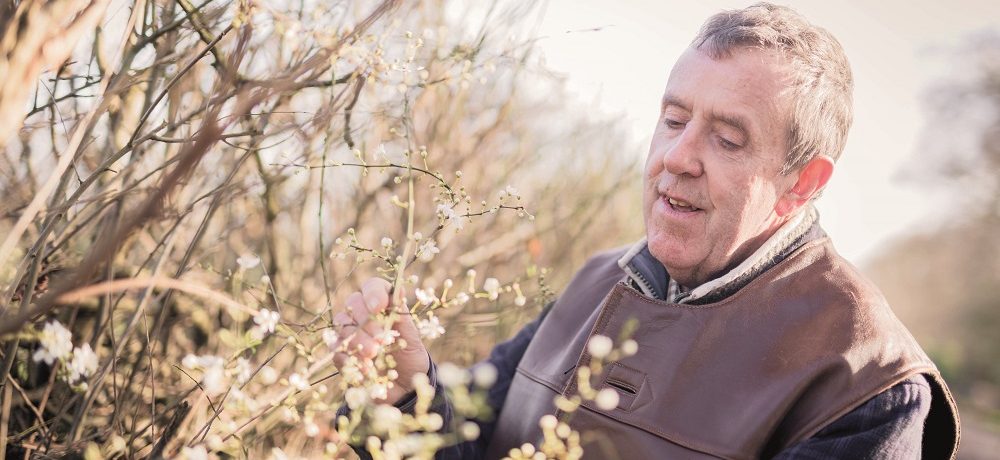




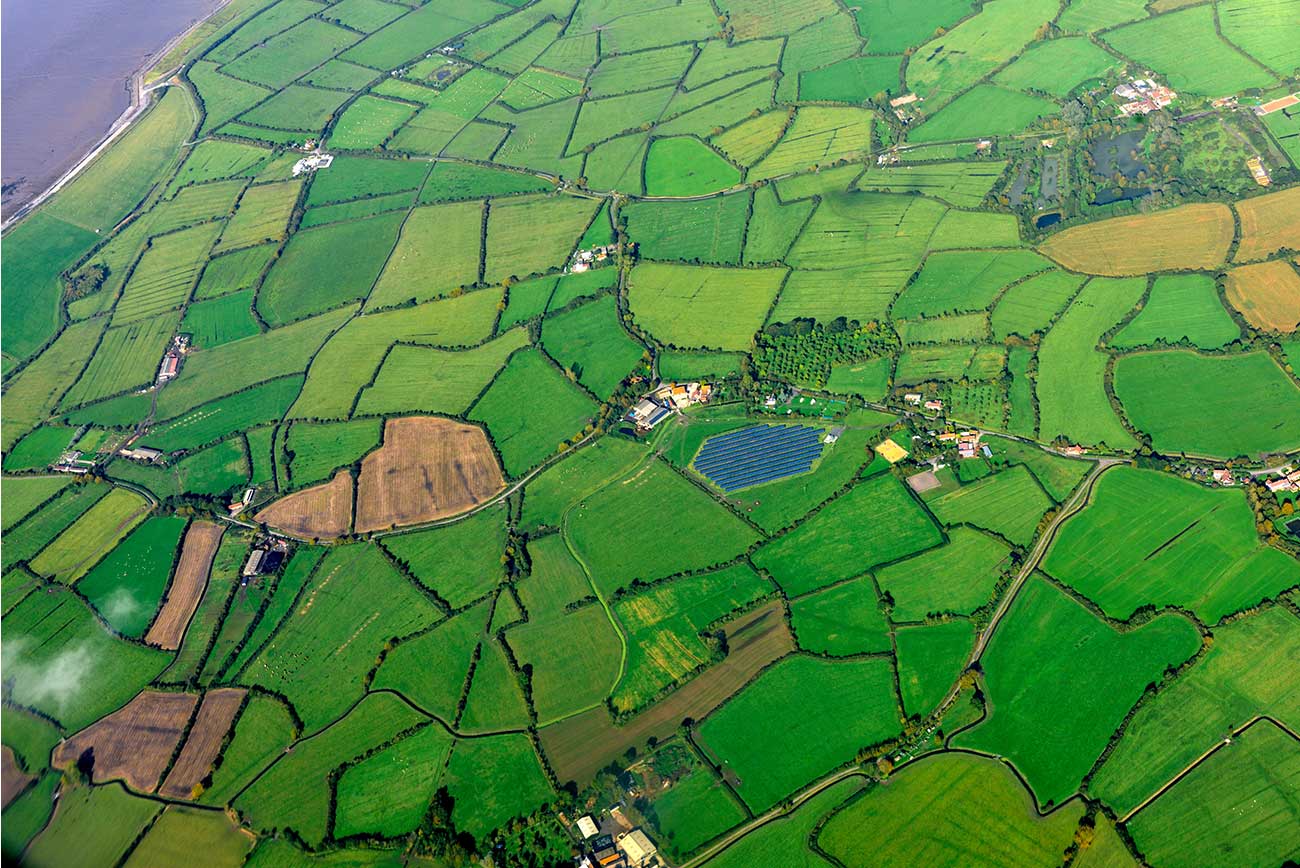
 10 min read
10 min read 